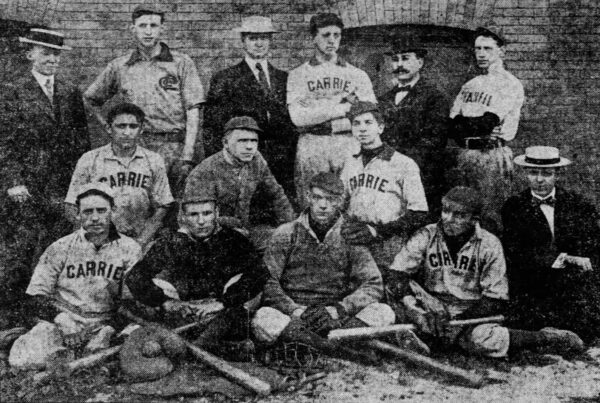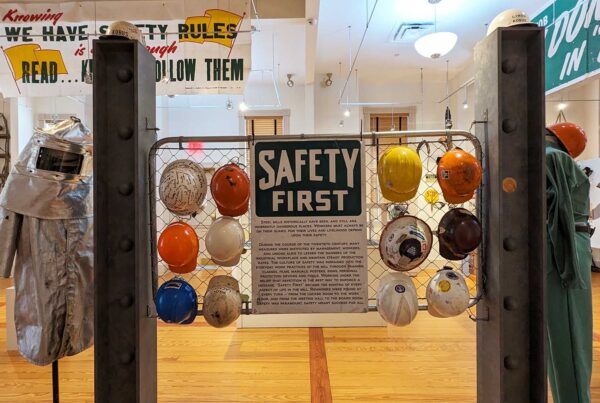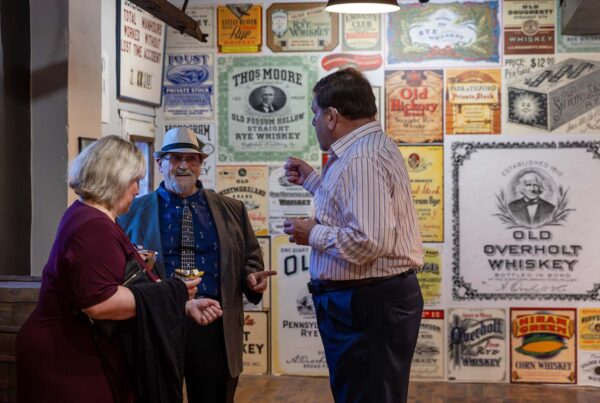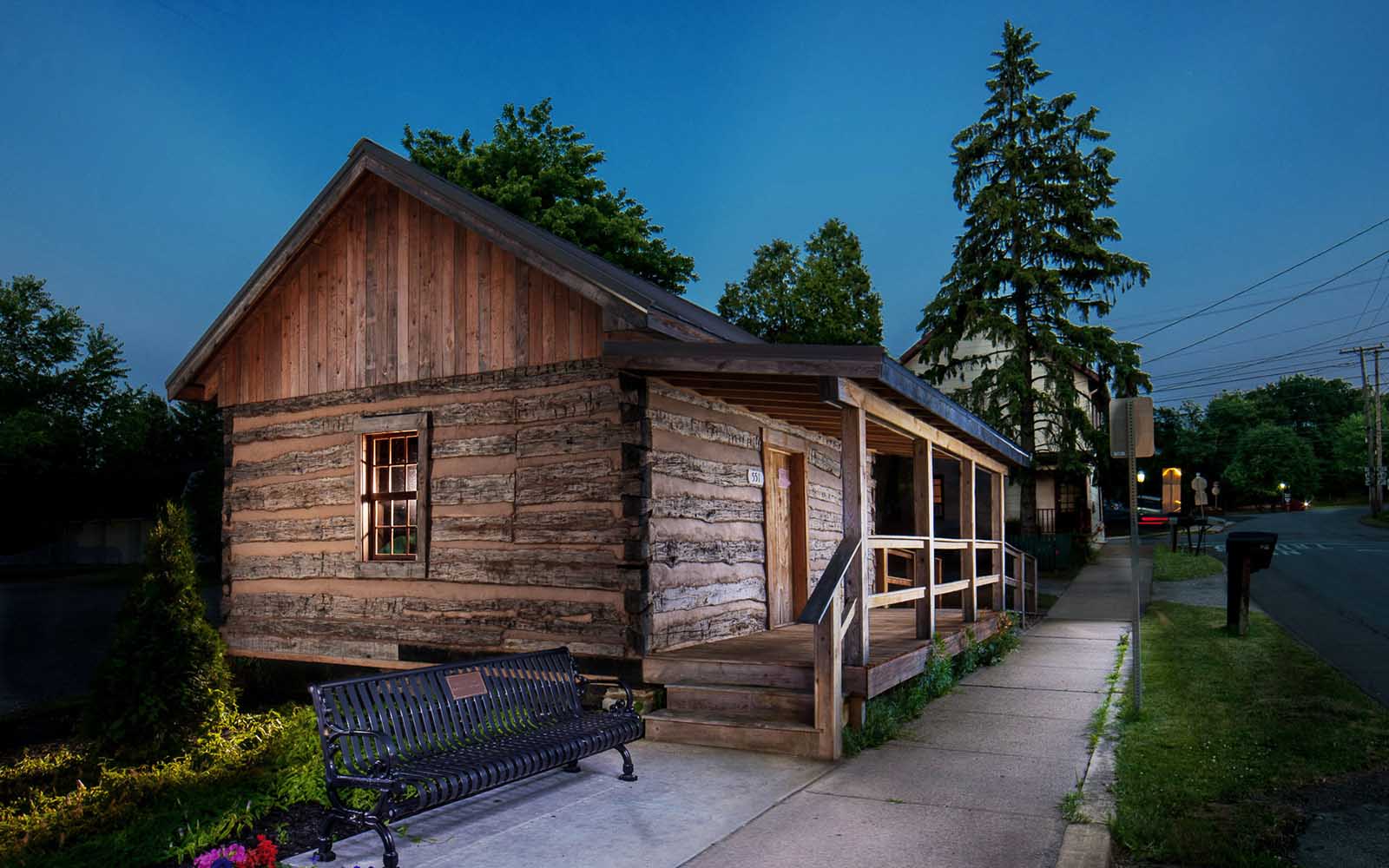
By Gita Michulka, Contributing Writer | Image: The Carothers Family cabin in the Historic Harmony District will showcase how 19th-century setters worked.
 Community Spotlight
Community Spotlight
The Community Spotlight series features Rivers of Steel’s partner organizations whose work contributes to the vibrancy of the Rivers of Steel National Heritage Area.
Harmony Museum’s Newest Display will Showcase how 19th-Century Settlers Worked
Harmony Historic District—a National Historic Landmark sitting north of Pittsburgh “30 miles and 200 years from the big city”—is home to one of the region’s largest preserved collections of buildings dating to the first quarter of the 1800s. The Harmonists, a communal society from Germany, first settled in the area in 1804. “They were very industrious,” points out Rodney Gasch, President of the Harmony Museum. “When they left in 1814 after just 10 years, they left 135 buildings, of which we have 25 left. It’s a great concentration of old buildings, and we’re really blessed to have all of this historic structure here in town.”
Thanks to a generous donation from a supporter of the museum, paired with funding from River of Steel’s Mini-Grant Program, this historic collection has grown by one log cabin and one unique display.
“There is a supporter of the museum, the P.W. Carothers Family, and the house that they grew up in was getting torn down, and the basis of that house was a circa 1820 log cabin,” says Gasch. “They offered to donate the log cabin part of the building to the museum so it could be preserved. We were able to partner with the Borough of Harmony—they had what was just a gravel municipal parking lot at the entrance to Harmony’s Historic Landmark District—and we reassembled the log cabin on that gravel parking lot to serve as a new focal point as you enter the historic district.”
A collection of Harmony Museum volunteers worked to dismantle, relocate, and reconstruct the log cabin. Work included numbering the logs as they were taken down—so they could be put back together “like Lincoln Logs,” sealing the area between the logs with cement chinking, installing a roof, and adding an era-appropriate porch.
Once this work was complete, the porch was used to house visitor information for both Butler County and places of interest in the Borough of Harmony.
“But we didn’t have the funding to finish the inside,” explains Gasch. “And so the Mini-Grant Program was really crucial for us, because we could match the Mini-Grant money with our labor, and we have a lot of really talented volunteers. Like most nonprofits, funding is a challenge, but we have skilled people who are happy to help out.”
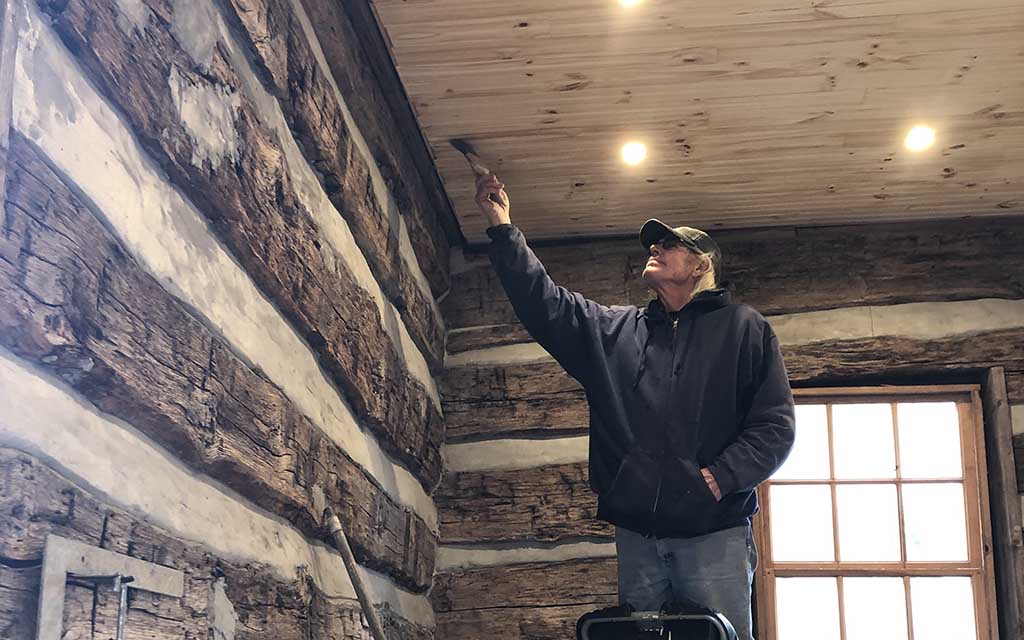
Harmony Museum volunteer Frank Luek applies a finish to the beadboard ceiling. Recessed ceiling lights, powered by rooftop solar panels, provide the lighting.
The Harmony Museum is already home to a similar cabin that was donated about 40 years ago, which is included as part of the museum tour to showcase how a 19th-century pioneer family would have lived. The display includes old rope beds, a spinning wheel, and candle making tools, among other artifacts.
Once completed, the Carothers Family cabin, which Gasch considers a “sister cabin” to this current display, will showcase how settlers from the same era worked.
With the funding from the Rivers of Steel grant, the interior of the cabin is in the process of being completed as true-to-the-era as possible. The cabin received a new sub-floor, and a museum member with a particular interest in having things look historically correct arranged for the delivery of hemlock plank flooring. The interior chinking has been fortified, and Gasch was also able to locate rosette nails from a manufacturer in Massachusetts that still makes the old-fashioned square-headed nails, to complete the look.
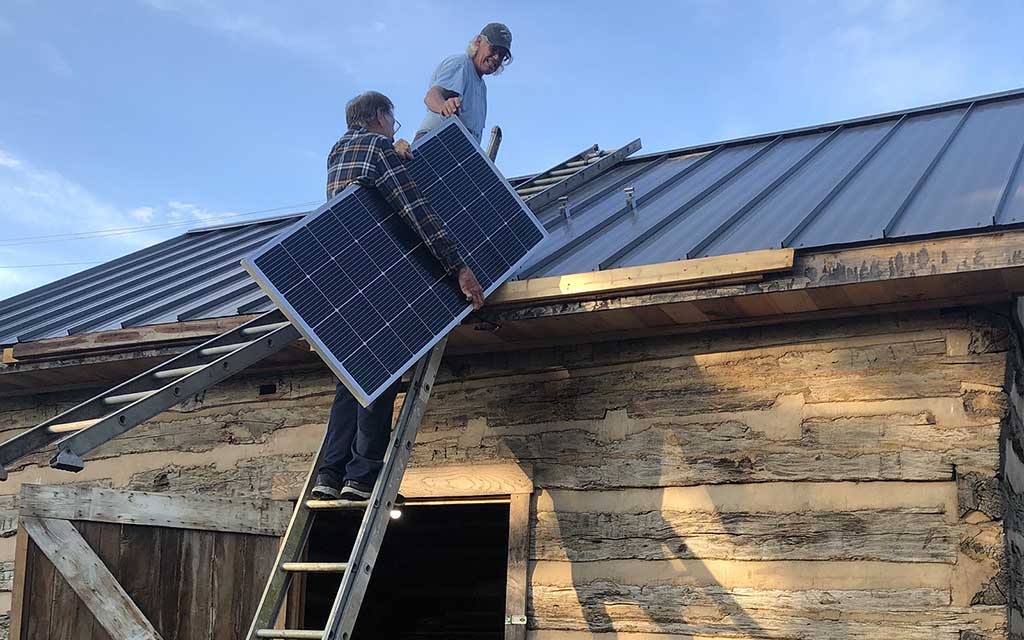
Installing solar panels on the cabin.
In order to have greater flexibility to offer programming throughout the year while staying true to the integrity of the time period, the museum also had solar panels installed on the roof that will power recessed direct-current lighting to illuminate the cabin during tours and programming. “The cabin is still ‘off-the-grid’,” notes Gasch, “but we now have flexibility to hold events into the evening hours or during dreary winter months.”
An additional donation from the Carothers Family will be put toward the final installation of the exhibit itself, which will include wood working tools, blacksmith tools, rake making, and representation of domestic work as well, with 150-year-old washing machines and butter churns.
Visitors to the cabin will also be able to learn how settlers utilized natural freeze / thaw cycles to create what locals call “barn stones”—massive chunks of sandstone that were carved down into square building blocks used as bases for buildings and structures.
Beyond the permanent displays, a new feature of the museum’s programming will be an artisans-in-residence series offered at the cabin. The exhibits housed in the center of the space will live on moveable panels, allowing the museum to open up the cabin to showcase an artisan at work. “We can invite a wood carver, or someone who spins or weaves, to come in and spend some time demonstrating their craft,” says Gasch. “We’re looking forward to highlighting artists who can demonstrate these skills that would have also been integral to the daily lives of the 19th-century settlers.”
Harmony Museum volunteers are working to complete the interior of the cabin and the displays by the spring of 2022. Learn more at harmonymuseum.org.
All photos provided by Historic Harmony, Inc.
About the Mini-Grant Program
Rivers of Steel’s Mini-Grant Program assists heritage-related sites and organizations as well as municipalities within the Rivers of Steel National Heritage Area to develop new and innovative programs, partnerships, exhibits, tours, and other initiatives. Funded projects support heritage tourism, enhance preservation efforts, involve the stewardship of natural resources, encourage outdoor recreation, and include collaborative partnerships. Through these efforts, Rivers of Steel seeks to identify, conserve, promote, and interpret the industrial and cultural heritage that defines southwestern Pennsylvania.
The Rivers of Steel National Heritage Area is one of twelve supported by the Pennsylvania Department of Conservation and Natural Resources (DCNR). Funding is provided via DCNR’s Community Conservation Partnerships Program and the Environmental Stewardship Fund to Rivers of Steel, which administers the Mini-Grant Program. The Historic Harmony, Inc. is one of six organizations who received Mini-Grant funding through this program in 2021.
Gita Michulka is a Pittsburgh-based marketing and communications consultant with over 15 years of experience promoting our region’s arts, recreation, and nonprofit assets.
If you’d like to know more about community projects supported by the Mini-Grant Program, read Gita’s recent article about Center of Life’s collaboration at the Hazelwood Green.

 Community Spotlight
Community Spotlight